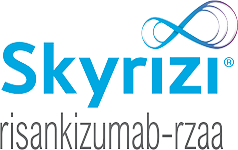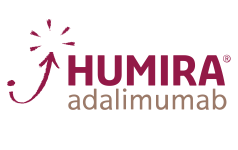For adult patients with moderate to severe rheumatoid arthritis (RA)
Prevention of further joint damage and improvement of physical function with HUMIRA® (adalimumab) + MTX1,2
PREMIER
Adult patients with early moderate to severe RA (less than 3 years’ duration) who were MTX-naïve1,2
PREMIER study design intro: 2-year, double-blind, active comparator-controlled study of adult patients with early moderate to severe RA (<3 years’ duration) and who were MTX-naïve. 799 patients were randomized to receive HUMIRA 40 mg EOW + MTX weekly (n=268), HUMIRA 40 mg EOW (n=274), or MTX weekly (n=257). Co‑primary endpoints were ACR50 response and change from baseline in mTSS at Week 52.1,2
Radiographic progression: joint damage through 2 years
Mean change from baseline mTSS at Year 1 and 21,2
- HUMIRA 40 mg EOW + MTX (n=268)
- MTX (n=257)
Extrapolated analysisc
aP<0.002 HUMIRA + MTX vs MTX
bP<0.001 HUMIRA + MTX vs MTX
cAnalysis of the intent-to-treat (ITT) study population. Values for missing data were imputed by a predefined linear progression method.
EOW=every other week; mTSS=modified total Sharp score; MTX=methotrexate
Components of mTSS2,*
JE Score2
- HUMIRA 40 mg EOW + MTX (n=268)
- MTX (n=257)
bP<0.001
JSN Score2
- HUMIRA 40 mg EOW + MTX (n=268)
- MTX (n=257)
bP<0.001
*Change in mTSS=change in JE + change in JSN2
EOW=every other week; JE=joint erosion; JSN=joint space narrowing; mTSS=modified total Sharp score; MTX=methotrexate
Signs and symptoms: ACR50 response rates at Weeks 52 and 1041,2
- HUMIRA 40 mg EOW + MTX (n=268)
- MTX (n=257)
NRI analysisb
aP<0.001
bThe analysis is of the intent-to-treat (ITT) population using nonresponder imputation (NRI) methodology. Patients who withdrew or had missing values were considered nonresponders.
ACR=American College of Rheumatology; EOW=every other week; MTX=methotrexate
Additional measures: clinical remission at 1 and 2 years2,*
Percent of patients meeting response criterion DAS28 <2.6
- HUMIRA 40 mg EOW + MTX (n=268)
- MTX (n=257)
aP<0.001
Clinical remission does not mean drug‑free remission or complete absence of disease activity.
DATA LIMITATION
Clinical remission at Year 2 was not a pre-specified endpoint and was not controlled for multiplicity. This data cannot be regarded as statistically or clinically significant, and therefore, no conclusions can be drawn.
*Clinical remission at Year 1 was a secondary endpoint and was defined as DAS28 <2.6. Disease activity score (DAS) is a composite index that includes variables such as the number of tender and swollen joints and either erythrocyte sedimentation rate or C-reactive protein (CRP) and may include the patient’s assessment of disease activity.
EOW=every other week; MTX=methotrexate
Safety data: 2-year RCT2,3
Adverse reaction rates observed in clinical trials may not predict the rates observed in a broader patient population in clinical practice.
Overall Year 1 and Year 2 (events per 100 patient-years)
| HUMIRA + MTX (n=268) PYs=482 |
HUMIRA monotherapy (n=274) PYs=435 |
MTX monotherapy (n=257) PYs=429 |
|
| SERIOUS INFECTION | 2.9 | 0.7 | 1.6 |
| MALIGNANCYa | 0.4 | 0.9 | 0.9 |
| ACTIVE TUBERCULOSIS | 0.2 | 0 | 0 |
| LYMPHOMA | 0 | 0 | 0.2 |
aExcluding non-melanoma skin cancer and lymphoma
RISK OF SERIOUS INFECTION1
Patients treated with HUMIRA are at increased risk for developing serious infections that may lead to hospitalization or death. Most patients who developed these infections were taking concomitant immunosuppressants such as methotrexate or corticosteroids.
Carefully consider the risks and benefits of treatment with HUMIRA prior to initiating therapy in patients with chronic or recurrent infection, or with underlying conditions that may predispose them to infections. Monitor patients closely for the development of signs and symptoms of infection during and after treatment with HUMIRA.
- Do not start HUMIRA in patients with an active infection, including localized infections
- Patients older than 65 years, patients with co-morbid conditions, and/or patients taking concomitant immunosuppressants may be at greater risk of infection
RISK OF MALIGNANCY1
Lymphoma, including a rare type of T-cell lymphoma, and other malignancies, some fatal, have been reported in patients treated with TNF blockers, including HUMIRA.
- Consider the risks and benefits of HUMIRA treatment prior to initiating or continuing therapy in patients with a known malignancy
- More cases of malignancies were observed among HUMIRA-treated patients compared to control patients in clinical trials
RISK OF TUBERCULOSIS1
Patients treated with HUMIRA are at increased risk for developing serious infections that may lead to hospitalization or death, including active tuberculosis (TB), including reactivation of latent TB. Patients with TB have frequently presented with disseminated or extrapulmonary disease.
- Test patients for latent TB before HUMIRA use and during therapy. Initiate treatment for latent TB prior to HUMIRA use
- Monitor patients closely for the development of signs and symptoms of infection during and after treatment with HUMIRA, including the development of TB in patients who tested negative for latent TB infection prior to initiating therapy
RISK OF LYMPHOMA1
Lymphoma and other malignancies, some fatal, have been reported in children and adolescent patients treated with TNF blockers, of which HUMIRA is a member.
Postmarketing cases of hepatosplenic T-cell lymphoma (HSTCL), a rare type of T-cell lymphoma, have occurred in adolescent and young adults with inflammatory bowel disease treated with TNF blockers including HUMIRA.
- The rate of lymphoma in controlled and uncontrolled clinical trials of HUMIRA in patients with rheumatoid arthritis, psoriatic arthritis, ankylosing spondylitis, Crohn's disease, ulcerative colitis, plaque psoriasis, hidradenitis suppurativa, and NI uveitis* was approximately 3-fold higher than expected in the general population.
- Patients with RA and other chronic inflammatory diseases, particularly those with highly active disease and/or chronic exposure to immunosuppressant therapies, may be at a higher risk for the development of lymphoma.
*Non-infectious (NI) intermediate, posterior, or panuveitis
PREMIER study design intro: 2-year, double-blind, active comparator‑controlled study of adult patients with early moderate to severe RA (<3 years' duration) and who were MTX-naïve. 799 patients were randomized to receive HUMIRA 40 mg EOW + MTX weekly (n=268), HUMIRA 40 mg EOW (n=274), or MTX weekly (n=257). Co-primary endpoints were ACR50 response and change from baseline in mTSS at Week 52. 497 patients from the RCT entered the OLE at Year 2. All patients received HUMIRA 40 mg EOW. Physicians could add MTX at any time based on clinical judgment.1,2
ACR=American College of Rheumatology; EOW=every other week; mTSS=modified total Sharp score; MTX=methotrexate; OLE=open‑label extension; PYs=patient-years; RCT=randomized controlled trial; TNF=tumor necrosis factor




